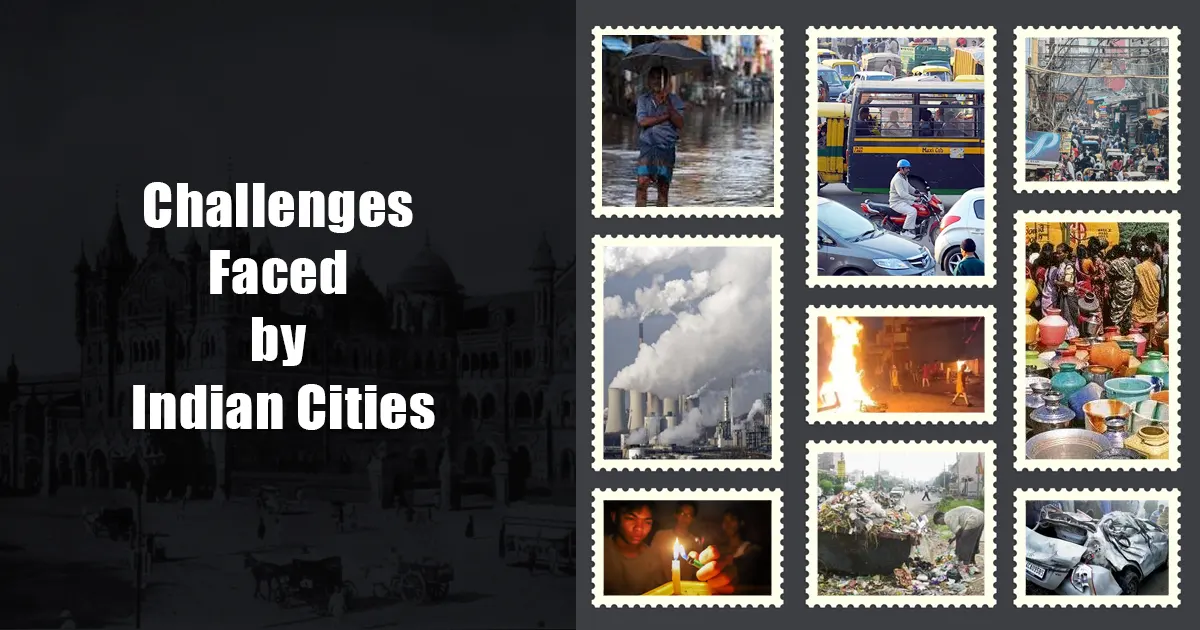
Context
World Cities Day 2024, themed “Youth Climate Changemakers: Catalysing Local Action for Urban Sustainability,” emphasizes the urgent need to tackle issues linked to urbanization.
Understanding Urbanization
Urbanization denotes the shift of populations from rural to urban areas, driving the growth of cities and transforming society, the economy, and infrastructure.
Key Terms Related to Urbanization
- Urban Agglomeration: A cluster of connected urban spaces, including suburbs, such as Greater Mumbai.
- Outgrowths: Peripheral areas connected to cities, like railway colonies.
- Over Urbanization: A situation where urban population growth surpasses anticipated levels.
- Suburbanization: The expansion of urban spaces into previously rural areas due to population overflow.
- Counter Urbanization: Movement of people from urban to rural areas, often motivated by quality-of-life concerns.
Global Urbanization Trends
- Growing Urban Populations: Presently, 57.5% of the world’s population, or approximately 4.7 billion people, lives in urban areas, with projections indicating this figure may double by 2050, heightening urban challenges.
- Vulnerability in Developing Regions: Rapid urbanization in the Global South exacerbates issues like poverty, strained infrastructure, and climate vulnerability, exposing cities to risks from extreme weather, flooding, and pollution.
Factors Influencing Urban Growth in India
- Natural Population Growth: Higher birth rates in cities, driven by improved healthcare services.
- Industrialization: Employment opportunities in industries draw rural migrants to urban centers.
- Improved Facilities: Cities offer better access to education, healthcare, and infrastructure.
- Economic Opportunities: Diverse job prospects in cities attract people from rural areas.
- Cultural Diversity: Cities offer cosmopolitan environments with varied cultural backgrounds.
- Economic Distress in Rural Areas: Economic hardships in rural regions push people towards cities.
Challenges in Indian Cities
- Data Limitations Impacting Resource Allocation: The lack of up-to-date census data limits effective urban planning. According to the World Bank, 40% of India’s population is urban.
- Outdated Urban Planning & Overcrowding: Aging planning frameworks contribute to overcrowding, with around 40% of city residents in slums lacking essential infrastructure.
- Environmental Strain & Climate Change: Severe pollution, urban flooding, and heat islands increase health risks and hinder sustainability.
- Housing Shortages, Inequality & Social Segregation: A shortage of affordable housing creates stark inequalities and segregation along social and economic lines.
- Informal Sector Dominance: About 90% of urban jobs are informal, lacking job security, social protection, and safe working conditions.
- Poor Policy Implementation: Key reforms, such as the 74th Constitutional Amendment designed to empower urban bodies, have not been effectively enacted, leaving cities without robust governance.
- Limited Government Support: With only 0.5% of GDP allocated to urban development, cities face funding challenges for essential infrastructure.
- COVID-19’s Impact & Reverse Migration: The pandemic exposed weaknesses in urban infrastructure, leading to reverse migration due to inadequate healthcare and economic support.
- Deindustrialization & Peri-Urbanization: Job losses since the 1980s have driven people toward peri-urban areas, creating overcrowded and economically strained unplanned settlements.
Government Initiatives for Urban Development
- Smart Cities Mission: Launched in 2015, this initiative seeks to promote sustainable urban development.
- Urban Housing: The PM Awas Yojana focuses on providing affordable housing for the urban poor.
- Transportation Improvements: The National Urban Transport Policy, along with metro projects in cities like Jaipur and Kanpur, aims to enhance public transportation.
- Water and Sanitation: Jal Jeevan Mission works to provide universal tap water connections, while AMRUT 2.0 focuses on water security and sewage management.
- Pollution Control: The National Clean Air Programme aims to reduce air pollution in cities.
- Employment Generation: The National Urban Livelihood Mission provides skills training to address urban poverty.
Way Forward for Addressing Urbanization Challenges
- Data-Driven Urban Planning: Regular urban censuses should be conducted to provide up-to-date data for better policy formulation and resource distribution.
- Strengthening Community Participation: Promote participatory governance by involving local communities in city planning.
- Youth and Skills Development: Implement programs that equip urban youth with skills in green technologies and sustainable development, fostering resilience in urban settings.
- Sustainable Infrastructure Development: Invest in climate-resilient infrastructure, including green public transport, energy-efficient buildings, and green spaces, to enhance urban quality of life.




